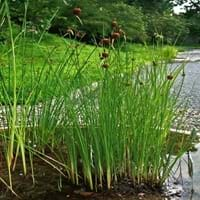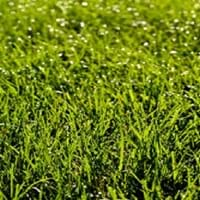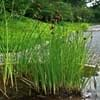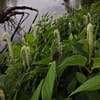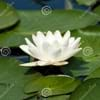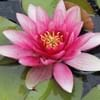Life Span
Perennial
Perennial
Origin
Eastern Europe, Western Asia
Southern Asia, India
Types
Common Cattail, Southern Cattail, Dwarf Bulrush
Not Available
Number of Varieties
Not Available
Habitat
Lake margins, Ponds, Swamps
Warmer regions
USDA Hardiness Zone
3-11
6-11
Sunset Zone
21,22
H1, H2, 5, 6, 7, 8, 9, 10, 12, 13, 14, 15, 16, 17, 18, 19, 20, 21, 22, 23, 24
Habit
Upright/Erect
Mat-forming
Flower Color
Yellow, Green, Brown, Chocolate
Not Available
Flower Color Modifier
Not Available
Bicolor
Fruit Color
Light brown, Light Red
Not Available
Leaf Color in Spring
Green, Dark Green
Gray Green, Dark Green
Leaf Color in Summer
Green, Dark Green
Light Green
Leaf Color in Fall
Green, Dark Green
Gray Green, Dark Green
Leaf Color in Winter
Brown
Gray Green, Dark Green, Tan
Leaf Shape
Long linear and narrow
Arrowhead
Plant Season
Summer, Fall, Winter
Spring, Summer, Fall, Winter
Sunlight
Full Sun, Partial Sun
Full Sun
Type of Soil
Clay, Loam, Sand
Clay, Loam, Sand
The pH of Soil
Acidic, Neutral
Acidic, Neutral, Alkaline
Soil Drainage
Poorly Drained
Well drained
Bloom Time
Summer, Late Summer, Early Fall
Indeterminate
Tolerances
Wet Site
Pollution, Salt, Soil Compaction
Where to Plant?
Container, In Water
Container, Ground
How to Plant?
Runners
Seedlings
Plant Maintenance
Low
Medium
Watering Requirements
Plant grows in water
Average Water Needs
In Summer
Aquatic Plant
Lots of watering
In Spring
Aquatic Plant
Moderate
In Winter
Aquatic Plant
Average Water
Soil pH
Acidic, Neutral
Acidic, Neutral, Alkaline
Soil Type
Clay, Loam, Sand
Clay, Loam, Sand
Soil Drainage Capacity
Poorly Drained
Well drained
Sun Exposure
Full Sun, Partial Sun
Full Sun
Pruning
Prune in early spring, Remove damaged leaves, Remove dead branches, Remove dead leaves
No pruning needed
Fertilizers
Nitrogen, Phosphate
Apply 3-1-2 or 4-1-2 ratio, Nitrogen
Pests and Diseases
Red blotch
Red blotch
Plant Tolerance
Drought
Pollution, Salt, Soil Compaction
Flowers
Showy
Insignificant
Flower Petal Number
Single
Single
Foliage Texture
Medium
Fine
Foliage Sheen
Matte
Matte
Attracts
Birds, Flying insects
Flying insects, Insects
Allergy
no allergic reactions
breathing problems, Eye irritation, Hives, Itchiness, Runny nose, sneezing, Throat itching, Whooping Cough
Aesthetic Uses
Beautification, Showy Purposes, Water gardening
Ground Cover, Landscape Designing
Beauty Benefits
Not Available
Skin irritation, Skin Problems
Edible Uses
Yes
Insignificant
Environmental Uses
Food for animals, Food for birds, Food for insects, Nesting sites for birds
Air purification, Prevent Soil Erosion, soil stabilisation
Medicinal Uses
Nutrients
Cures constipation, Cures foot fissures, Digestive disorders, Eliminate toxins, Fatigue, Halitosis, Improves Breast milk production, Increase red blood cells, Insomnia
Part of Plant Used
Leaves
Leaves, Stem
Other Uses
Decoration Purposes, Showy Purposes, Used as Ornamental plant
Animal Feed, Cattle Fodder, Used as Ornamental plant
Used As Indoor Plant
Yes
Insignificant
Used As Outdoor Plant
Yes
Yes
Garden Design
Bog Garden, Container, Water Gardens
Lawns and Turf
Botanical Name
TYPHA minima
CYNODON dactylon
Common Name
Dwarf Cattail
Bermuda Grass
In Hindi
बौना कैटेल
बरमूडा घास
In German
Dwarf Rohrkolben
Bermuda Gras
In French
Cattail nain
l'herbe des Bermudes
In Spanish
Espadaña enano
Grama
In Greek
Νάνος Cattail
Αγριάδα
In Portuguese
Tifa Dwarf
grama Bermuda
In Polish
Dwarf Ożypałka
Trawa Bermuda
In Latin
Pumilio Cattail
Bermuda Grass
Phylum
Tracheophyta
Magnoliophyta
Class
Liliopsida
Liliopsida
Clade
Angiosperms, Commelinids, Monocots
Angiosperms, Commelinids
Tribe
Not Available
Chlorideae
Subfamily
Not Available
Chloridoideae
Number of Species
Not Available
Importance of Dwarf Cattail and Bermuda Grass
Want to have the most appropriate plant for your garden? You might want to know the importance of Dwarf Cattail and Bermuda Grass. Basically, these two plants vary in many aspects. Compare Dwarf Cattail and Bermuda Grass as they differ in many characteristics such as their life, care, benefits, facts, etc. Every gardener must at least have the slightest clue about the plants he wants to plant in his garden. Compare their benefits, which differ in many ways like facts and uses. The medicinal use of Dwarf Cattail is Nutrients whereas of Bermuda Grass is Cures constipation, Cures foot fissures, Digestive disorders, Eliminate toxins, Fatigue, Halitosis, Improves Breast milk production, Increase red blood cells and Insomnia. Dwarf Cattail has beauty benefits as follows: Not Available while Bermuda Grass has beauty benefits as follows: Not Available.
Compare Facts of Dwarf Cattail vs Bermuda Grass
How to choose the best garden plant for your garden depending upon its facts? Here garden plant comparison will help you to solve this query. Compare the facts of Dwarf Cattail vs Bermuda Grass and know which one to choose. As garden plants have benefits and other uses, allergy is also a major drawback of plants for some people. Allergic reactions of Dwarf Cattail are no allergic reactions whereas of Bermuda Grass have breathing problems, Eye irritation, Hives, Itchiness, Runny nose, sneezing, Throat itching and Whooping Cough respectively. Having a fruit bearing plant in your garden can be a plus point of your garden. Dwarf Cattail has no showy fruits and Bermuda Grass has no showy fruits. Also Dwarf Cattail is not flowering and Bermuda Grass is not flowering . You can compare Dwarf Cattail and Bermuda Grass facts and facts of other plants too.
